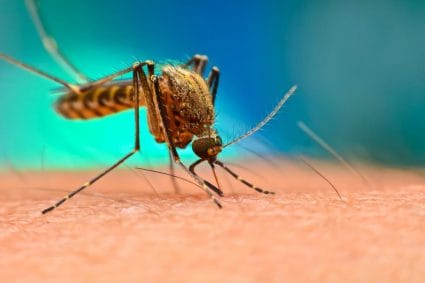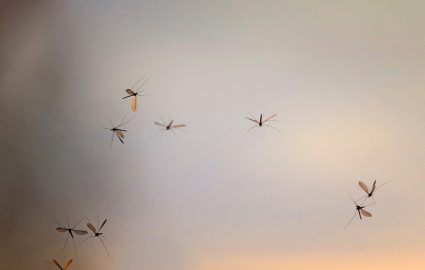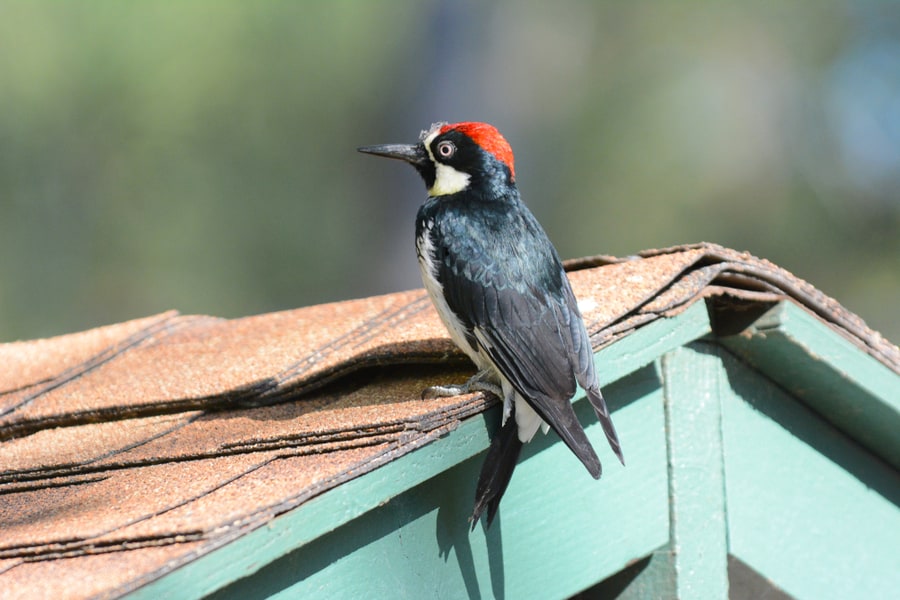
Nothing disturbs a Saturday morning’s rest more than the sound of woodpeckers on the roof. Although woodpeckers are nice to look at, these noisy animals can cause extensive damage to your building and nearby trees.
So, how do you scare them away from your roof? Keep reading this guide to learn seven practical strategies.
Woodpeckers are persistent, territorial animals that can sometimes be difficult to drive away. And because they are protected under the 1918 Migratory Bird Act, you cannot kill them to stop an infestation.
The best you can do is scare them away from your house. To do this, you can employ any of the natural, harmless, and bird-friendly methods below:
- Take away their food sources
- Hang reflective woodpecker decoys in your compound
- Use loud noises and sudden movements
These and other strategies discussed in the article are practical ways to pursue woodpeckers from your house.
In the rest of the article, we will walk you through seven practical ways to keep woodpeckers away from your building and answer some frequently asked questions about the infestations of these territorial animals.
7 Ways To Scare Woodpeckers Away From Roof
Woodpecker damages on the roof can cause you thousands of dollars to fix, especially if they build a nest in your home. One tell-tale sign of woodpecker damage is a series of deep holes in wood in a straight line.
Regardless of how discomforting this may be, you cannot kill woodpeckers to stop an infestation. These birds are protected under the 1918 Migratory Bird Act.
Instead, you can scare them off or direct their attention away from your house. Below, we will show you seven ways to do this without harming the birds.
1. Take Away Woodpecker Food Sources

The first effective way to frighten woodpeckers from wood is to take away their food sources. A woodpecker’s primary food source is wood-loving insects like ants, termites, and beetles.
The best spot for finding these insects is inside wooden structures.
The presence of woodpeckers around your house can indicate a more serious problem, like an insect infestation. You may want to check for tell-tale signs of an infestation, like dead insects or bee hives.
Once there are dead insects around, woodpeckers are often not far away.
You will typically hear a woodpecker before seeing it – usually, loud tapping is the first sign of trouble. You can inspect your wood for other signs of damage, like small holes, wide scrapes, and gouges.
Getting rid of these pests birds is sometimes as easy as taking away their food sources. It is best to call pest control experts to inspect your house for bugs and have them removed.
Once the insects are gone, woodpeckers will have no option but to leave. However, verify that the pest control company uses organic pesticides that will not harm birds that eat the dead insects.
2. Use Another Food Source To Distract the Woodpeckers
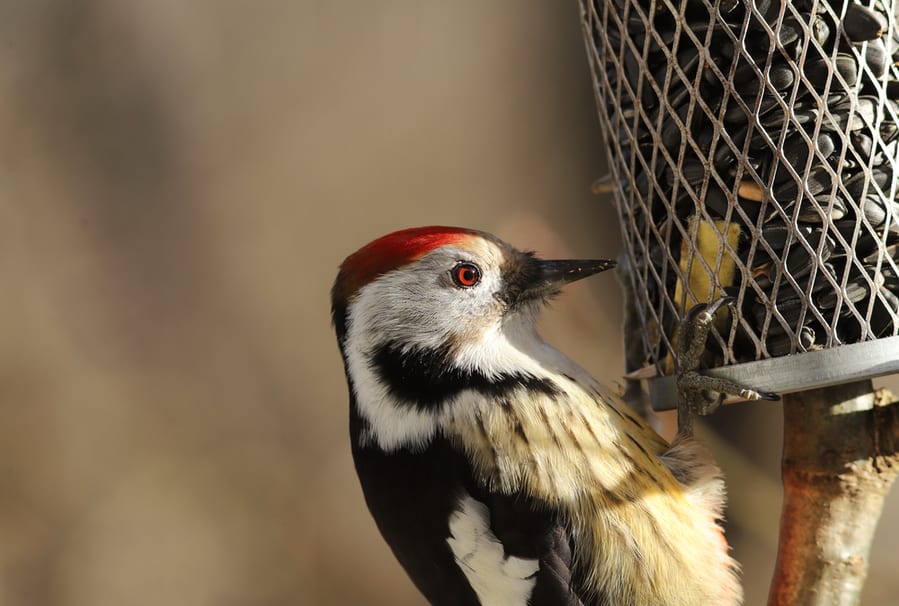
Another way to drive away woodpeckers from your wooden belongings is to create a diversion of attention. Although woodpeckers love insects, insects are not the only things these birds can eat.
For example, woodpeckers love to eat suet, a cow fat by-product, especially when food is scarce. This is typical during early spring, late fall, and winter.
Hang up a birdfeeder with this new meal in an area where woodpeckers feed to introduce them to it. Then after a few days, relocate the birdfeeder from your home slowly.
You can move it one foot at a time to not disrupt the woodpeckers’ routine. After a while, you should have successfully changed their location far from your home and favorite trees.
Once the woodpeckers stop coming around, you can bring down the birdfeeder. Alternatively, you can plant fruit trees on the edge of your building, far from your house, to distract the birds.
Woodpeckers enjoy fruits and berry bushes, like blueberries, raspberries, and currants. So, planting these trees and bushes can draw woodpeckers away and preserve the lifespan of your wooden properties.
Other food items in the birdfeeder are peanuts and sunflower seeds.
3. Build a Woodpecker Birdhouse
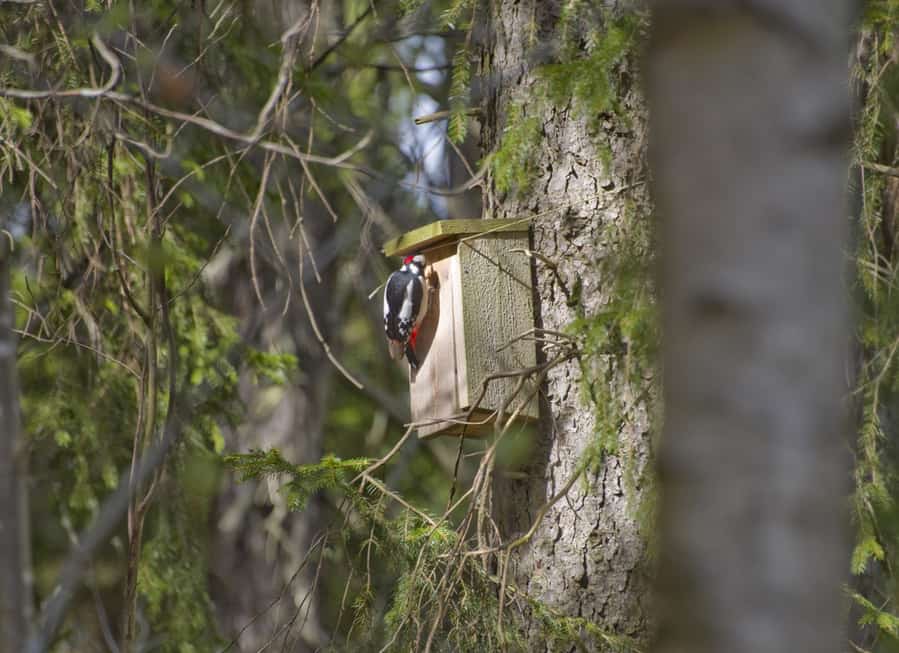
One of the reasons why woodpeckers create holes in your house is because they want to build a nest. Woodpeckers love cavities and can only build their nests and raise their young in enclosed areas.
That is why they love to burrow in dead trees or rooftops. Fortunately, woodpeckers will agree to live in a birdhouse. So, in addition to removing their food sources and distracting them with other food sources, you can also add investing in birdhouses to your woodpecker-deterring arsenal.
You can buy some and drop them around your house. The hope is that the woodpeckers will go for this new diversion and stop making cavities in your house.
However, before buying a birdhouse, identify the woodpecker species attacking your home. This will help you make the right choice, as each woodpecker specie requires a different type of birdhouse.
4. Scare Woodpeckers Away With Loud Noise
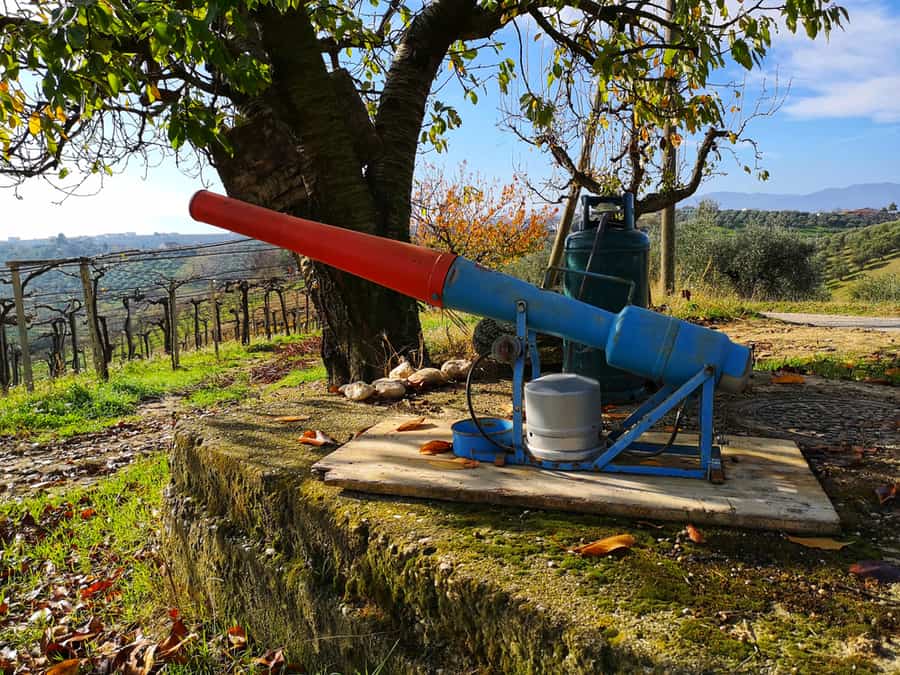
Loud noises and sudden movements are some woodpecker enemies. Woodpeckers are jumpy birds, and it doesn’t take much to scare them away.
You can take advantage of woodpeckers’ hatred for loud noises to frighten them away from your roof.
For this method, you can bang on pots, turn up the radio, stop on the deck, or even throw stones. Any noise that can get the birds to leave is fine.
However, you may have to deal with curious stares from your neighbors. But this is a small price for getting these unwanted visitors off your space.
Alternatively, you can get a bird-repellant device that mimics the sound of their predators. If the woodpeckers perch at sunset or sunrise, you can set the repellant device to turn on every 12 hours.
Whatever bird repellent you use should not be one with an extremely high frequency.
While humans may not pick up high frequencies from a bird-repellant device, it can confuse birds and damage your pet’s hearing.
5. Deter Woodpeckers With Reflective Decoys

A deterrent refers to any product or object that scares pests away from an area. You can invest in woodpecker deterrents to keep these pecking birds off your house.
A classic approach for driving birds away is to hang up anything that reflects light or moves in the wind. These include CDs, aluminum foil, flash tape, and colorful pinwheels.
When these reflective decoys hit sunlight or wind, they move in a manner that scares woodpeckers off. Shiny windmills and steamers are affordable reflective decoys that can scare woodpeckers off your home.
If you have a large compound, you can string a line of colorful flags or peanuts across the environment. When the wind catches them, they will flap around in the wind and scare woodpeckers.
Alternatively, you can buy a plastic owl or hawk status as a decoy. Owls and hawks are natural woodpecker predators, and their presence can easily frighten woodpeckers.
However, this remedy is a short-term strategy, as woodpeckers will soon detect that the decoy does not move. Thus, it cannot be a real predator.
6. Fix Up Your Building To Deter Woodpeckers
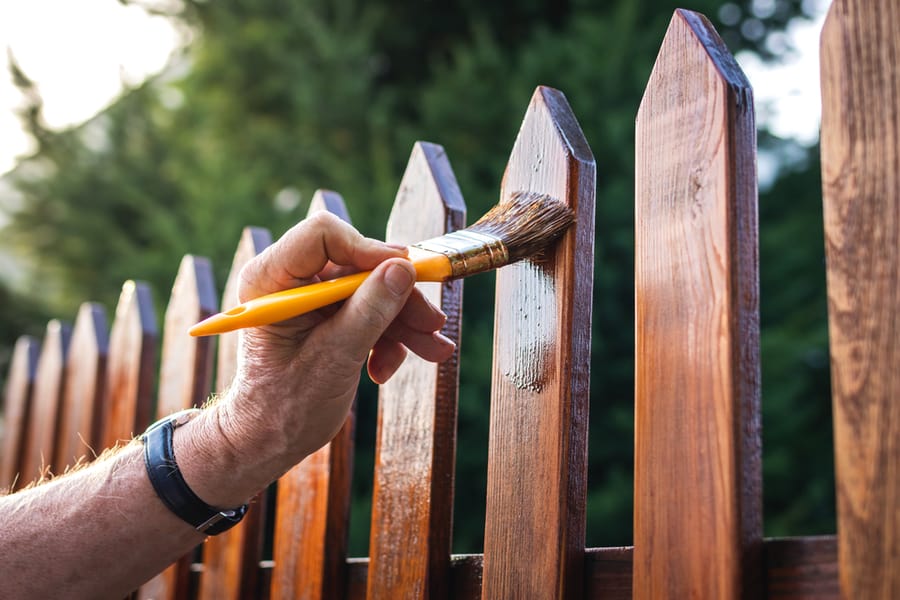
Apart from being attracted to insect-infested wood, woodpeckers love rotting wood. So, if your house is falling apart, fixing it up can stop woodpeckers from coming around.
Plus, if you have had carpentry work done at home, there is a chance that insects may enter through the drilled holes. You can call a professional to handle the timber replacements and repairs.
But if you are good with your hands, there are many DIY tricks. For example, you can fill holes with caulk, a filler made from linseed oil, and ground chalk. After the caulk dries, cover it with oil paint and hang some bird netting over the area.
Don’t buy the regular netting for shielding crops. The best option for the job is the one made particularly for protecting buildings. This bird netting has a hard exterior and serves as a barrier for woodpeckers attempting to come close.
Woodpeckers also prefer to perk natural, unpainted wood. So, giving your home exterior a fresh coat of wood paint can protect it from these noisy birds.
For existing holes made by woodpeckers, cover them with caulk. When woodpeckers try to perk at caulk, it will not make the noise they love, and they will have no option but to relocate.
Leaving damaged spots unrepaired can cause more problems. For one, woodpeckers repeatedly poke at the same spot and create large holes that may be difficult to fix.
These holes can gather dirt, moisture, and rot. In the long run, this can attract more insects like termites and beetles. The more insects come around your wood, the higher chances of woodpeckers coming around your house.
Repairing all wood damage while still fresh can help reduce these problems.
7. Call for Professional Help
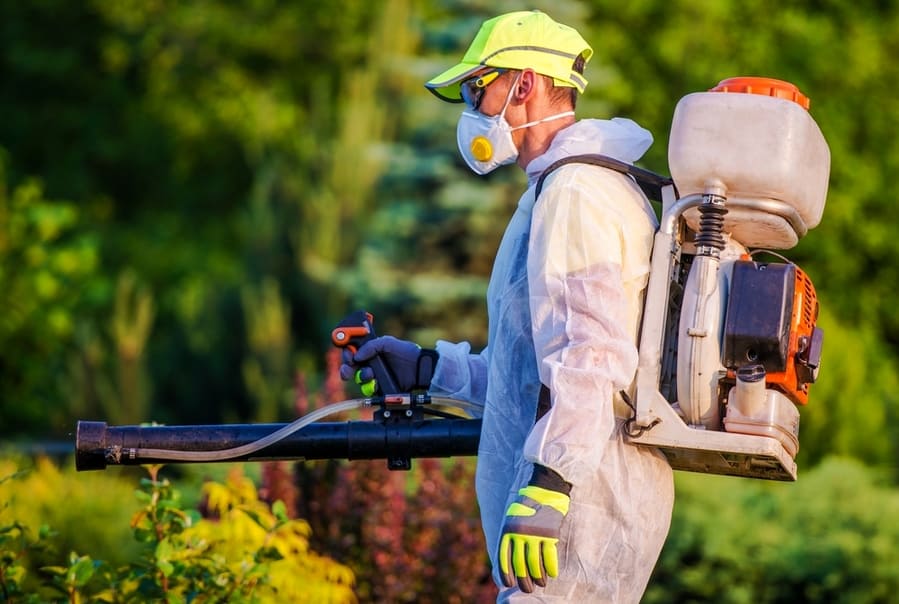
If none of these DIY tactics work, you may need to call in professionals to help resolve the problem. This is the best you can do at this spot, especially when the woodpeckers have become territorial.
Pest control experts have the right tools to fix the problems and are better equipped to comply with environmental laws. Woodpeckers are a protected species facing the risk of extinction.
As a result, it takes care and precision to drive them away. You may not be able to handle this on your own properly.
So, instead of doing hit-and-miss without results and wasting your money, reach out to an expert in your area and let them handle the problem once and for all.
Conclusion
Woodpeckers are persistent, territorial animals that can sometimes be difficult to drive away. So, the best time to implement deterrent strategies is before it becomes a full-blown attack.
You can employ many natural, harmless, and bird-friendly methods to pursue them and protect your house from damage. Try out any DIY strategies suggested above to drive away these noisy birds.
For a permanent solution, get pest control experts to eliminate the sources of the infestation. We suggest getting quotes from different pest control companies before choosing the best fit for your needs.
Frequently Asked Questions
Why Do Woodpeckers Hammer on Wood?
Woodpeckers drum on wood to establish their territory or attract a mate. Another reason is that they are trying to dig a nest or reach for insects. Finally, woodpeckers hammer on wood to store food.
Can Woodpeckers Harm Trees?
Woodpeckers drum holes into trees for many reasons, like hiding and feeding. Although they do not intend to harm the trees, they make them more open to diseases.
To protect the trees in your garden, wrap their trunks in burlap and hang reflective objects on their branches.
Do Woodpeckers Hurt Humans?
Woodpeckers may be generally annoying, but they cannot harm humans. They can only discomfort you with their noise and cost you money to fix damages caused by their drilling.


